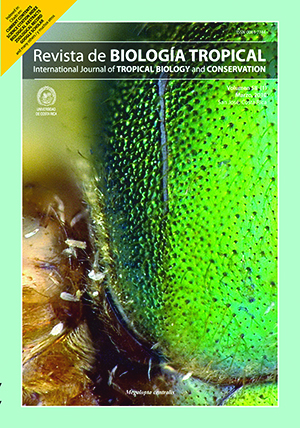Resumen
En la zona marina ubicada al norte del Caribe Mexicano se congregan grandes grupos de tiburón ballena (Rhincodon typus) entre mayo y septiembre de cada año. Se describe la variación espacio-temporal de la distribución del tiburón ballena al norte del Caribe mexicano y las condiciones fisicoquímicas y biológicas que prevalecen en la zona durante la temporada de presencia y ausencia de R. typus. De abril de 2005 a marzo de 2006, 26 estaciones de muestreo fueron monitoreadas registrando avistamientos de tiburón ballena y variables fisicoquímicas (temperatura, oxígeno disuelto, coeficiente de extinción de luz y salinidad) en 10 salidas de campo. En cada estación fueron recolectadas muestras zooplancton y de agua para determinación de clorofila-a y nutrientes. Las condiciones fisicoquímicas fueron significativamente diferentes entre temporadas (ANOSIM, Rglobal=0.632). La temporada de presencia de R. typus estuvo caracterizada por valores bajos de salinidad, mayores valores de temperatura y oxígeno disuelto; mayores de nitrógeno inorgánico disuelto y concentraciones de clorofila-a y aunque la biomasa promedio de zooplancton fue menor que en la temporada de ausencia de R. typus, los valores máximos de biomasa zooplanctónica se registraron en el periodo de presencia y en sitios donde se registraron las mayores abundancias de la especie, apoyando la hipótesis de que el sitio es utilizado por la especie principalmente como zona de alimentación. Las condiciones fisicoquímicas de la zona de estudio que favorecen la productividad biológica explican la variabilidad espacial y temporal de R. typus al norte del Caribe Mexicano.
Esta obra está bajo una licencia internacional Creative Commons Atribución 4.0.
Derechos de autor 2010 Revista de Biología Tropical
Descargas
Los datos de descargas todavía no están disponibles.

